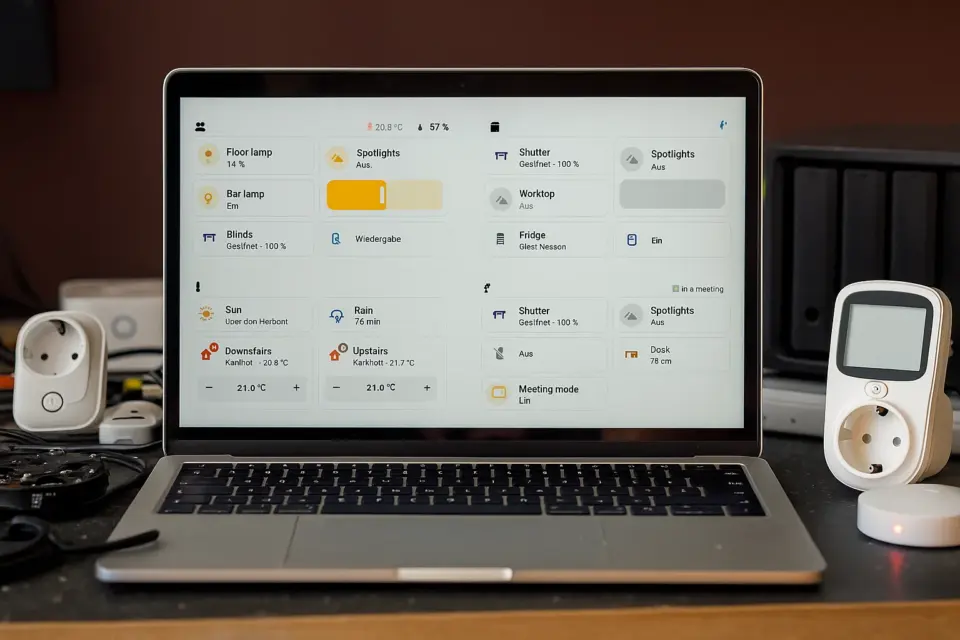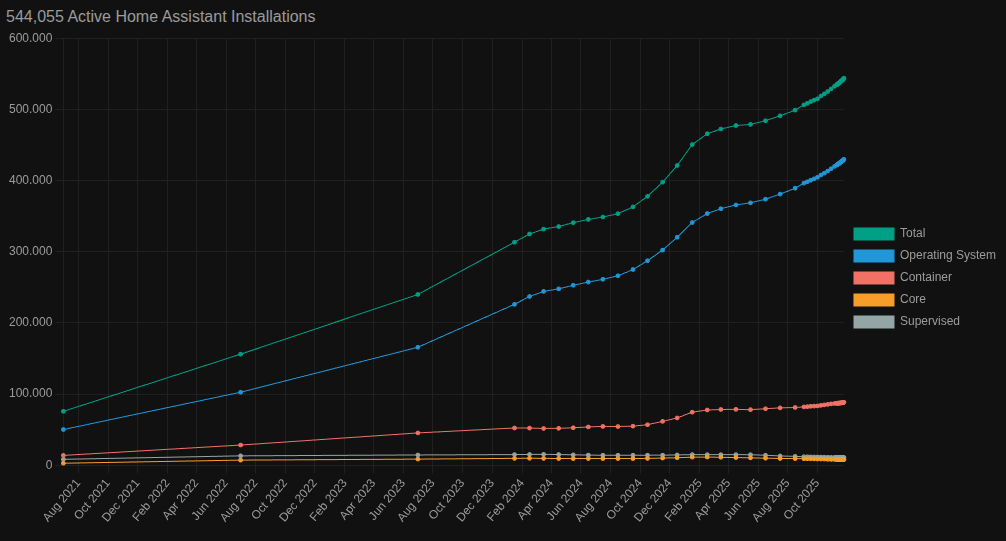Freedom for the Smart Home: Home Assistant Continues to Gain Followers

In times of increasingly frequent cloud outages, arbitrary changes in app control by manufacturers, and opaque data collection, locally operated smart home solutions are gaining importance. A central platform in this field is Home Assistant. The open platform continues to attract more users, even though setup — especially in a self-hosted environment — is not yet fully plug-and-play. Still, more and more users appear willing to invest time and effort in exchange for greater digital self-determination.
Home Assistant is an open-source automation platform for the smart home. Its goal is to unify devices from different manufacturers and protocols under a single interface — ideally running on the local network and without requiring cloud services. The advantages include improved resilience against internet or cloud outages, greater data autonomy, and reduced dependence on vendor ecosystems.
The platform supports a broad range of technologies such as Zigbee, Z-Wave, Thread/Matter, Wi-Fi, and Bluetooth — provided the appropriate hardware is available. A centralized web UI or mobile apps allow control of all integrated devices: lights, sensors, heating actuators, or surveillance cameras. A key component is the automation system: events (“triggers”), conditions, and actions can be combined — for example, to activate lighting when motion is detected or adjust heating based on weather data. Home Assistant also places strong emphasis on local operation: data remains within the local network, and cloud connections are optional. Its community-driven architecture enables extensions through integrations and add-ons, such as energy monitoring or network analysis.
The platform is aimed at users who want to build a smart-home setup independent of vendor clouds without giving up convenience features. It is suitable for environments with heterogeneous device landscapes where different manufacturers and standards need to be unified. However, operating the system requires technical understanding: network infrastructure, access security, and configuration files are not always trivial. Some devices remain cloud-dependent, limiting full local control. Remote access and backup concepts require additional planning and security measures. For users expecting true plug-and-play functionality without technical setup, the entry barrier remains higher than with purely cloud-based ecosystems.
Migration to a locally operated environment – a practical experience
The blog article “I stopped exposing my smart home to the Internet, and remote access is still easy” illustrates how an existing smart home infrastructure can be migrated to Home Assistant. Author Joe Rice-Jones describes on XDA Developers his starting point, motivations, migration process, and evaluation of the results.
Rice-Jones had operated numerous smart home devices from different manufacturers for years, many of which depended heavily on cloud services. As his focus on cybersecurity grew, he realized that many devices were implicitly trusted within the home network even though vendor servers were no longer maintained or required continuous internet access. Under these conditions, system control no longer met his expectations for reliability and autonomy.
Migration and technical implementation
To consolidate his setup, Home Assistant was introduced as the central control platform. The goal was to reduce dependence on vendor clouds and ensure operation even without internet connectivity. A critical part of the project involved remote access: Rice-Jones notes that he expected this step to be the biggest hurdle — yet it turned out to be comparatively simple. He used technologies such as VPNs or modern mesh-network tools (e.g., based on WireGuard) for secure external access. At the same time, direct cloud connections from devices were disabled or shifted to local control, and apps and services were consolidated.
The migration brought several tangible benefits: the system continued to operate during internet outages, the number of vendor apps and subscriptions decreased, and control over household and device data increased. Remote access could be set up without exposing open ports to the internet. However, the technical setup was not trivial, and security as well as network design required careful planning. The approach is therefore particularly suited to tech-savvy users willing to take responsibility for operation and security.

Home Assistant continues to gain followers
Home Assistant is clearly growing in importance: The official statistics report around 544,000 active installations, while the platform assumes that less than a quarter of all users have opted in to data collection. In 2021, opt-in installations were already at 100,000 — since then, the platform has grown rapidly. This trend shows that Home Assistant has expanded far beyond its early DIY niche. Increasingly, users seek alternatives to cloud-dependent systems, responding to cloud outages, price changes, or the discontinuation of product lines, and favor solutions with local data processing and long-term control. The growing installation base reflects this shift clearly.
Summary (tl;dr)
- Home Assistant enables centralized, locally operated control and automation of smart home devices with a focus on privacy and independence.
- Core functions include integration of diverse device standards, centralized control, automation, and local data processing.
- The experience report by Joe Rice-Jones illustrates a real-world migration: from cloud-dependent devices toward a locally controlled system with secure remote access.
- The migration improves control, resilience, and reduces cloud dependence but requires technical knowledge and planning.
- The trend toward locally operated platforms matters for both the market and users — especially given concerns about data protection, vendor-controlled ecosystems, and reliability.
- The growing relevance of self-hosted smart home infrastructures shows that the topic is no longer niche but increasingly important for household-level smart-home decisions.












